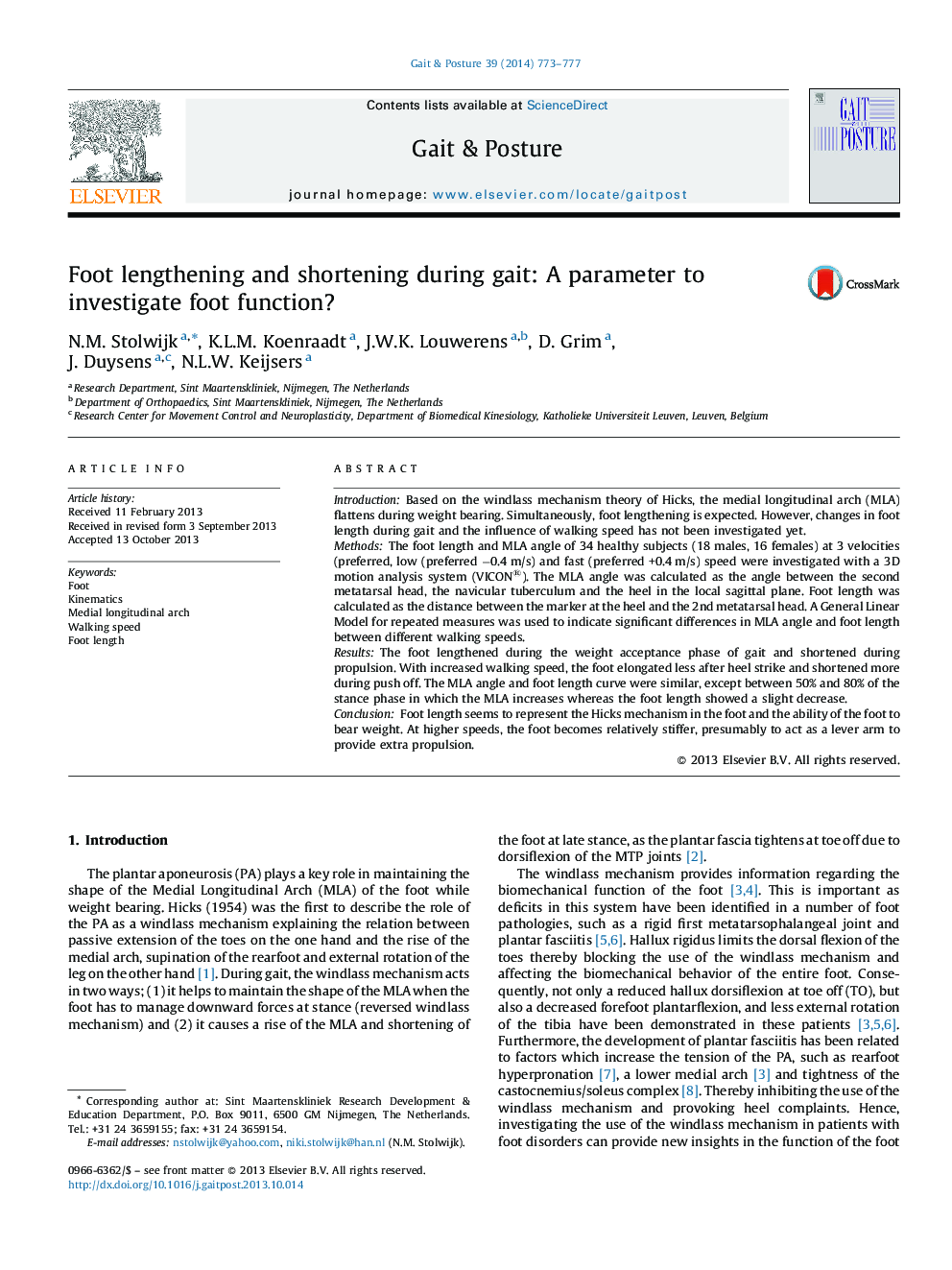| کد مقاله | کد نشریه | سال انتشار | مقاله انگلیسی | نسخه تمام متن |
|---|---|---|---|---|
| 6206399 | 1265646 | 2014 | 5 صفحه PDF | دانلود رایگان |
- Foot length and medial arch (MLA) angle during stance phase at 3 speed conditions were investigated.
- The foot lengthens during weight bearing and shortens during propulsion.
- At higher walking speeds there is less change in foot length and MLA angle compared to slower speeds.
- The foot length and MLA curve were similar except between 50% and 80% of stance.
- Foot length represents Hicks mechanism in the foot and is easy to implement in gait analysis.
IntroductionBased on the windlass mechanism theory of Hicks, the medial longitudinal arch (MLA) flattens during weight bearing. Simultaneously, foot lengthening is expected. However, changes in foot length during gait and the influence of walking speed has not been investigated yet.MethodsThe foot length and MLA angle of 34 healthy subjects (18 males, 16 females) at 3 velocities (preferred, low (preferred â0.4Â m/s) and fast (preferred +0.4Â m/s) speed were investigated with a 3D motion analysis system (VICON®). The MLA angle was calculated as the angle between the second metatarsal head, the navicular tuberculum and the heel in the local sagittal plane. Foot length was calculated as the distance between the marker at the heel and the 2nd metatarsal head. A General Linear Model for repeated measures was used to indicate significant differences in MLA angle and foot length between different walking speeds.ResultsThe foot lengthened during the weight acceptance phase of gait and shortened during propulsion. With increased walking speed, the foot elongated less after heel strike and shortened more during push off. The MLA angle and foot length curve were similar, except between 50% and 80% of the stance phase in which the MLA increases whereas the foot length showed a slight decrease.ConclusionFoot length seems to represent the Hicks mechanism in the foot and the ability of the foot to bear weight. At higher speeds, the foot becomes relatively stiffer, presumably to act as a lever arm to provide extra propulsion.
Journal: Gait & Posture - Volume 39, Issue 2, February 2014, Pages 773-777
